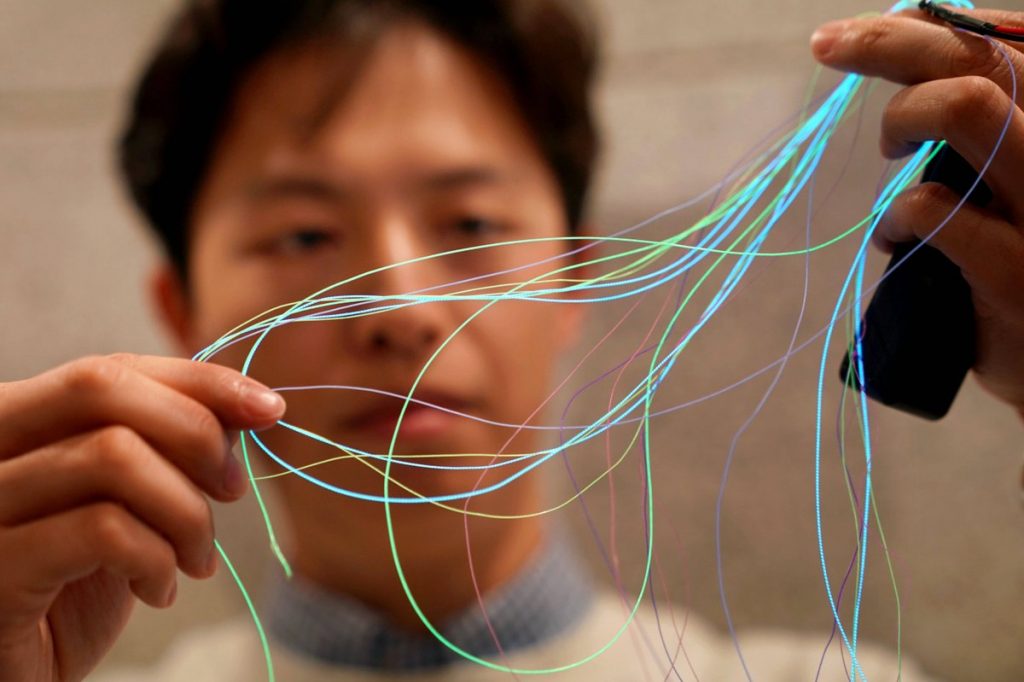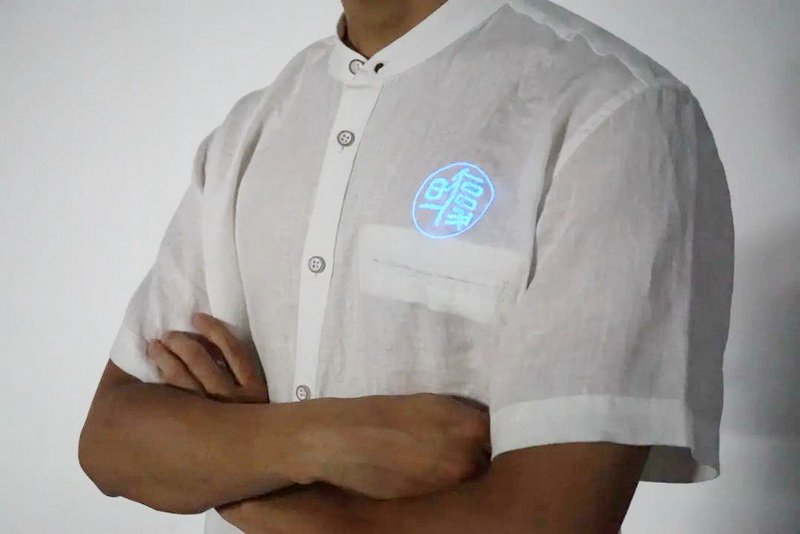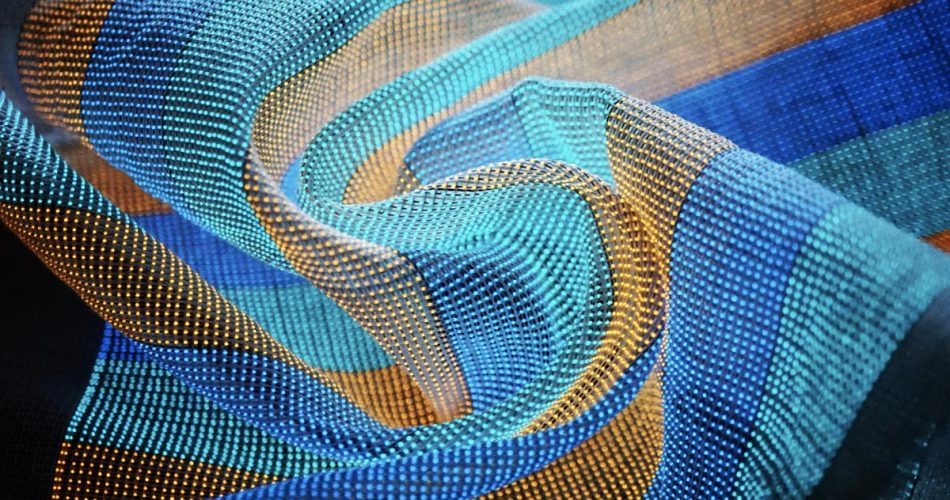It can display text on cloths
Fudan University scientists have created a smart fabric with a display technology that allows users to transform their garments into a digital screen. The discovery, according to the researchers, will change the next generation of wearable electronics.
The department of macromolecular engineering at the Shanghai-based university developed a 6-meter-long, 25-centimeter-wide display textile with 5 sets of 105 electroluminescent units spaced 800 micrometers apart. Electroluminescence is an electrical phenomenon in which a material emits light in response to an electric current passing through it. According to an article published in the British scientific journal Nature, the design effectively weaves a display screen into the fabric.

Professor Peng Huisheng directed the project, which took ten years of trial and error testing. Finally, the group was able to create transparent electrical weft threads and luminescent warp fibers. When the two components are woven together, they create minuscule points of light that resemble those on a digital display screen.
This smart fabric can be washed, folded, and stretched without losing its brightness. Professor Peng told China Daily that garments woven with this novel material can precisely follow the irregular shapes of the human body and are as light and breathable as ordinary fabrics.

In a video released on the university’s website, they showed how it’s possible to reply to text messages from a sleeve or to navigate a map from an arm.
Another image shows a researcher with a university badge woven into the fibers of his shirt and the badge illuminates when electricity passes through it.
“Integrating displays into textiles offers exciting opportunities for smart electronic textiles, the ultimate goal of wearable technology, poised to change how we interact with electronic devices”, the team wrote.
The researchers envision the technology being employed in a variety of practical circumstances where a mobile phone can’t be easily accessible; bicyclists, motorcyclists, arctic explorers, and geologists will be among those who would benefit most from it. With this technology, users can access a display of real-time location information by tapping on their clothing, or navigate their travel by wearing a map on their clothing.
People with linguistic difficulties can also communicate with others via the dynamic sleeve display. In addition, it can also be used to collect index data, like brain waves for the healthcare industry.
In one experiment with the fabric, the team recorded brainwaves from volunteers who were either playing a race car game or meditating, to simulate a person in a stressed or calm condition
When paired with a processor, the waves could then be translated into messages displayed on the fabric saying either “relaxed” or “anxious”.
“We have shown that an integrated textile system consisting of display, keyboard, and power supply can serve as a communication tool, demonstrating the system’s potential across various aspects of the Internet of Things”, the team said.
The need for displaying anything anywhere is getting out of hand. We risk being victims, if we aren’t already, of digital screens in a reality where we can’t look each other in the eyes or watch the world around us because our attention is stolen by text or images on displays placed in every corner and object.
Source pandaily.com

